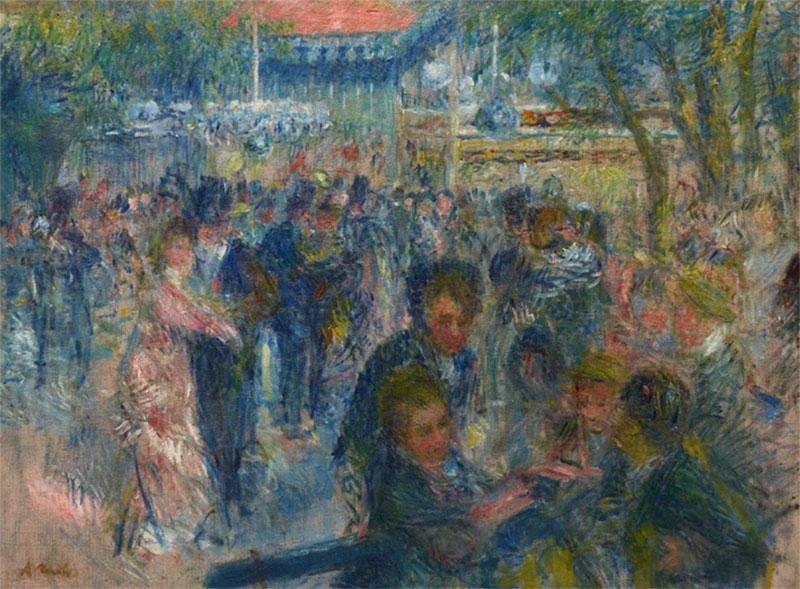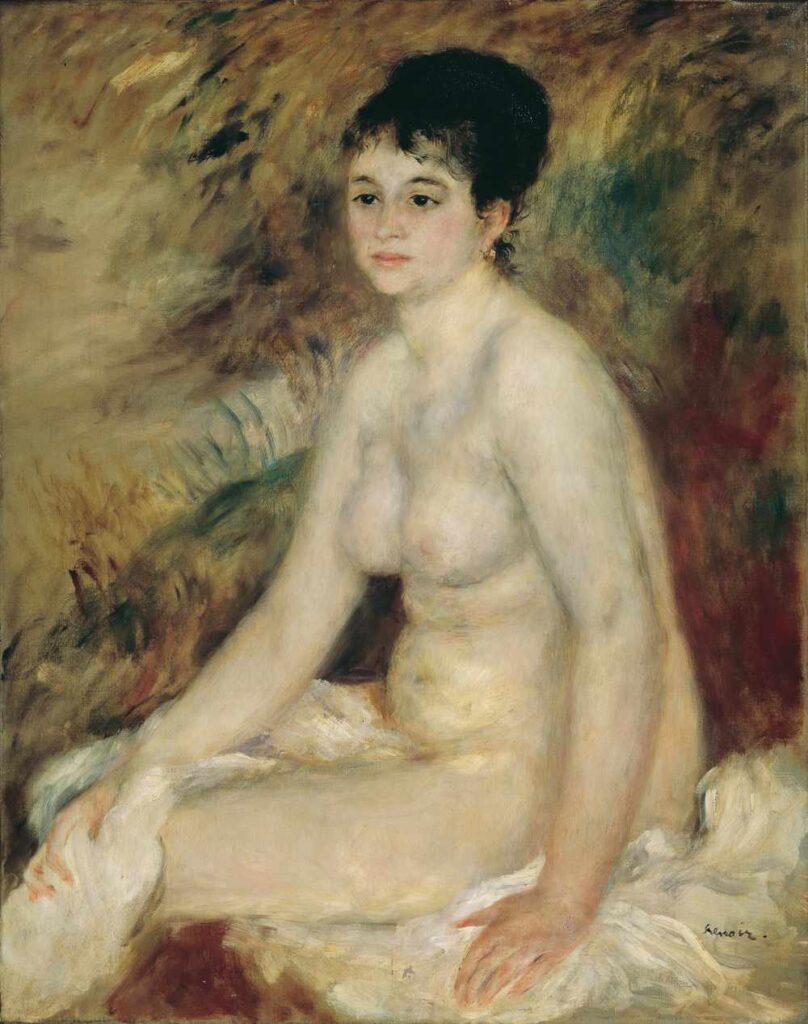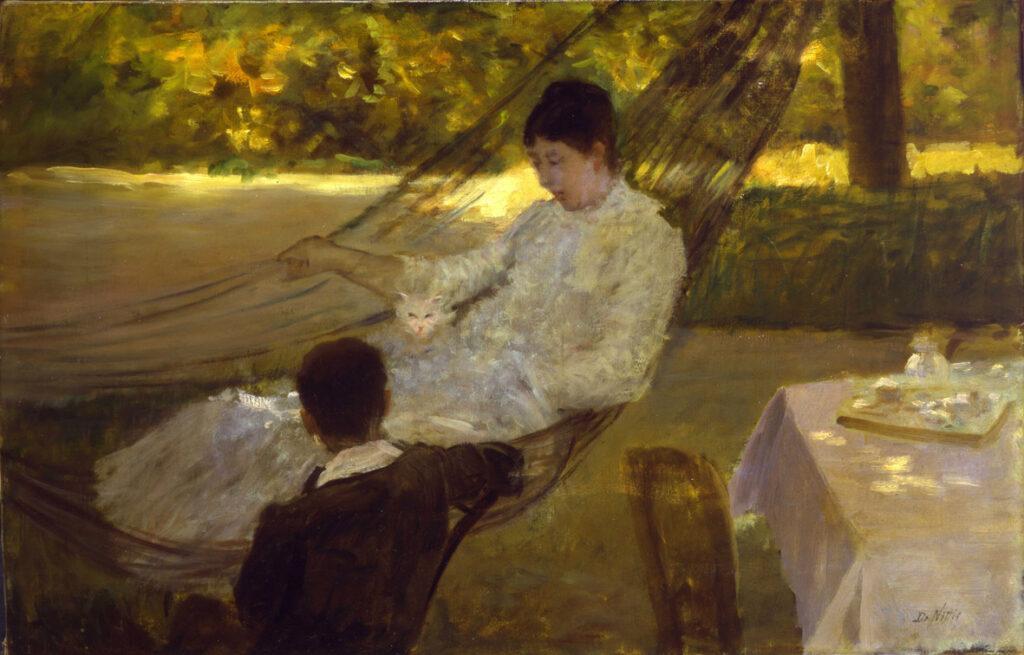“Pierre-Auguste Renoir: the Dawn of a New Classicism” is hosted from Feb. 25 to June 25, 2023, at Palazzo Roverella
ROVIGO – Known as one of the finest painters of Impressionism, Pierre-Auguste Renoir (Limoges, Feb. 25, 1841 – Cagnes-sur-Mer, Dec. 3, 1919) is the protagonist in Rovigo of a significant exhibition, curated by Paolo Bolpagni.
The exhibition is dedicated to the French painter’s entire creative parabola, mainly his trip to Italy, which marked an apparent “change of course” in his production and a progressive departure from Impressionist poetics and technique.
By presenting an unusual Renoir, less known to the general public, the exhibition at Palazzo Roverella intends to immerse visitors in the stylistic evolution of the painter, destined to set a school for subsequent generations of artists and leave an indelible mark on the history of art.

Renoir impressionist, the painter of joy
Renoir joined the Impressionist group, headed by Camille Pissarro, in 1873, along with Claude Monet, Alfred Sisley, Edgar Degas, and Berthe Morisot.
Suppose Monet “holds court” with his brushstrokes and his eye ready to capture, unfiltered, the pure sensations nature suggests. In that case, Renoir is not to be outdone and, with the same intent, succeeds in immortalising the mutability of the moment, the effects of light and movement as it unfolds, through the variety of bright colours and without resorting to dark tones and shadows.
The exhibition at Palazzo Roverella, therefore, welcomes us with the Impressionist Renoir, dwelling on the birth of the movement and the choice to paint en plein air, in the open air, mainly landscapes, urban views, scenes of leisure, amusements of the city bourgeoisie, and female nudes.
In all its bursting dynamism, Renoir makes himself a “spokesman” for late 19th-century Parisian life, arguing for the inappropriateness of representing human suffering in painting, restoring the atmosphere of a serene existence instead.
In content and innovative and lively language, the artist becomes identified as the painter of joie de vivre, of the joy of living.
Among the masterpieces of this phase are Après le bain and Le Moulin de la Galette, a preparatory study of which is also on display in the exhibition. The painter immortalises the subjects’ còlti en plein air in the Montmartre square, focusing mainly on the teeming crowds and lighting effects. The effect of swirling motion is achieved through oblique lines and overlapping of the figures.

Renoir and the Grand Tour in Italy
From the 18th century onwards, the so-called Grand Tour, the long journey through continental Europe, had become an essential stage for the European aristocracy and intellectual class. Tourism originated from the famous 18th-century Tour, although it has lost its exclusive characteristics today.
A Grand Tour, but all dedicated to the Belpaese, was also an essential experience for Renoir, who, at the age of forty, in a moment of particular creative restlessness, decided between 1881 and 1882 to undertake a journey along the Italian peninsula.
The painter chose Venice as his first stop, where he was impressed above all by Carpaccio and Tiepolo. He moved on to Padua, then to Florence and Rome, where he admired the Renaissance masters, Raffaello among them.
He was then amazed by the Gulf of Naples and the wonders of Pompeii and enraptured by Capri‘s enchanting charm.
Finally, in Palermo, he met Richard Wagner, to whom he dedicated a portrait, which was not much appreciated by the musician, who seems to have made this “curious” judgement “he looks like an embryo of an angel swallowed by an Epicurean who mistook him for an oyster”.

Renoir and Italy, Beyond Impressionism
Indeed, the artist did not intend to imitate the ancients “as it was” but to take from the greats of the past the method and technique to “be of his own time”.
Having partially abandoned Impressionist painting and the tale of the amusement of the Parisian bourgeoisie, Renoir elaborated a personal style inspired by classicism and the great Italian masters of the past (without ever forgetting his devotion to Ingres).
In the exhibition, his works are compared with masterpieces by Carpaccio, Titian and Tiepolo.
Among the works on display is the Baigneuse blonde, a portrait of the 22-year-old model Aline Charigot, who was to become his wife, depicted as a Venus in front of a blue sea which, according to Renoir’s testimony, would be that of the Bay of Naples.
The figure of the young woman sums up the outcome of the painter’s discovery of ancient art and Raphael’s frescoes at the Villa Farnesina in Roma.
During the years of his maturity, drawing returned to the fore in Renoir’s work. The forms became more monumental, solid and defined, almost sculptural, and the tones became warmer.
The artist thus anticipates that “return to order” would soon be back in vogue, particularly in Italy between the two wars.

Not only Renoir …
In dialogue with Renoir’s works, which in the 11 sections of the exhibition include landscapes, portraits, and still lifes, are the works of Italians active in Paris, the “italiens de Paris”, such as Medardo Rosso, Giuseppe De Nittis, Federico Zandomeneghi, Giovanni Boldini. And then again those of Carlo Carrà, Giorgio de Chirico and Filippo de Pisis.
Weaving the threads of the whole story are the biographical events of the artist, also enriched by the contribution of his son Jean. This famous film director dedicated a 40-minute film to his father.
Set in the second half of the 19th century, it becomes the occasion for a homage to the atmosphere of Renoir’s paintings, so much so that in some clips selected for the exhibition, it seems we are inside one of his works.
Information
From 25 February to 25 June 2023
Roverella Palace
via Laurenti 8/10, Rovigo
Opening hours:
Monday-Friday
09.00 – 19.00
Saturday, Sunday, and public holidays
9.00 – 20.00
Tickets
Full 12 €
Reduced 9 €
Visit the Reductions and Conventions sections to determine who is entitled to the reduced rate.
Guided tours
Every Saturday, Sunday and public holidays at 10.30 am, 12 pm, 3.30 pm, 4.30 pm, 5.30 pm
Cost: €6 per person + reduced entrance fee
Cost of radio guide hire: €1 per person
Guided tours for groups (max 25 people)
Cost: €75 + reduced entrance fee
Cost of radio guide hire: 1 € per person
Contact centre: 0425 460093

